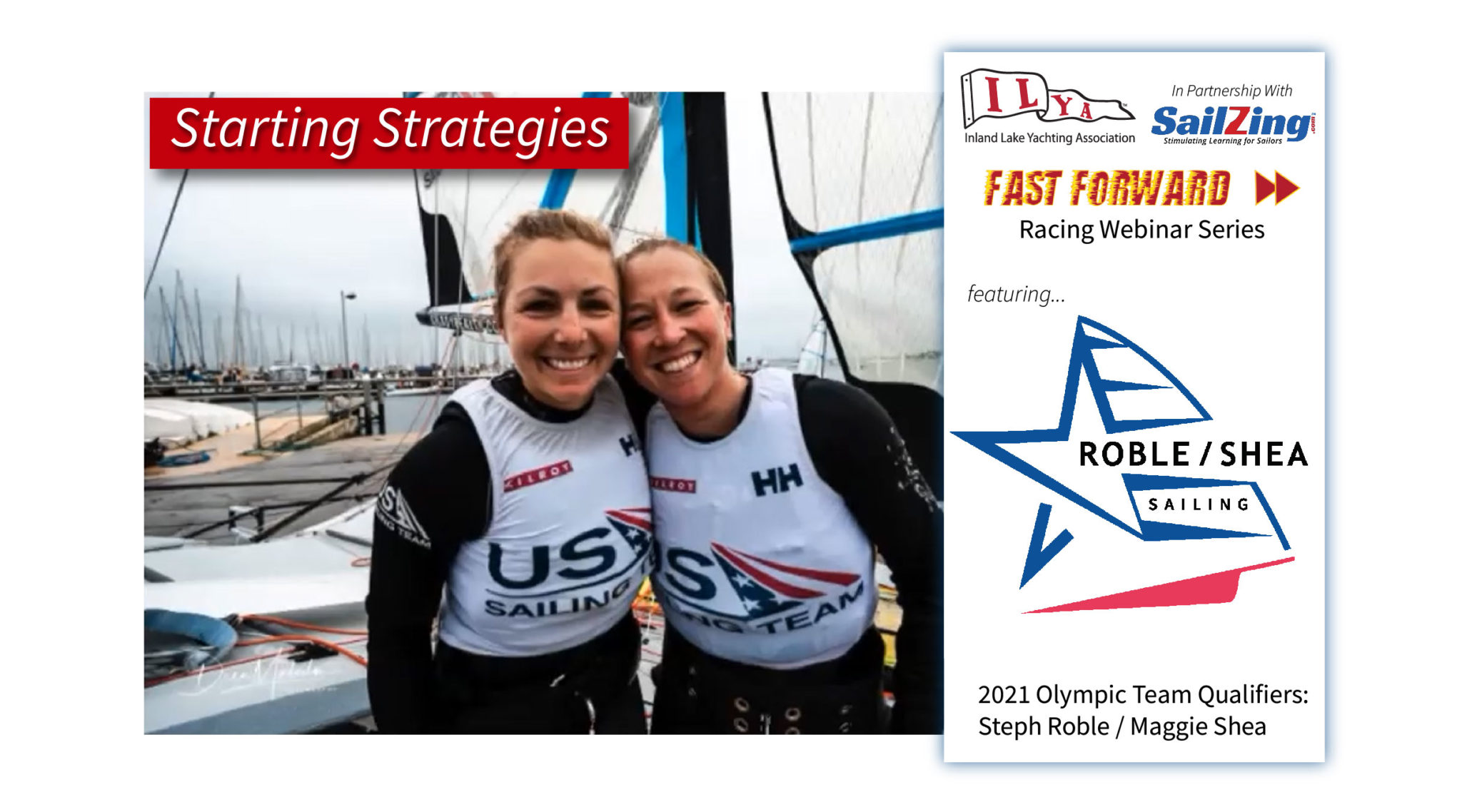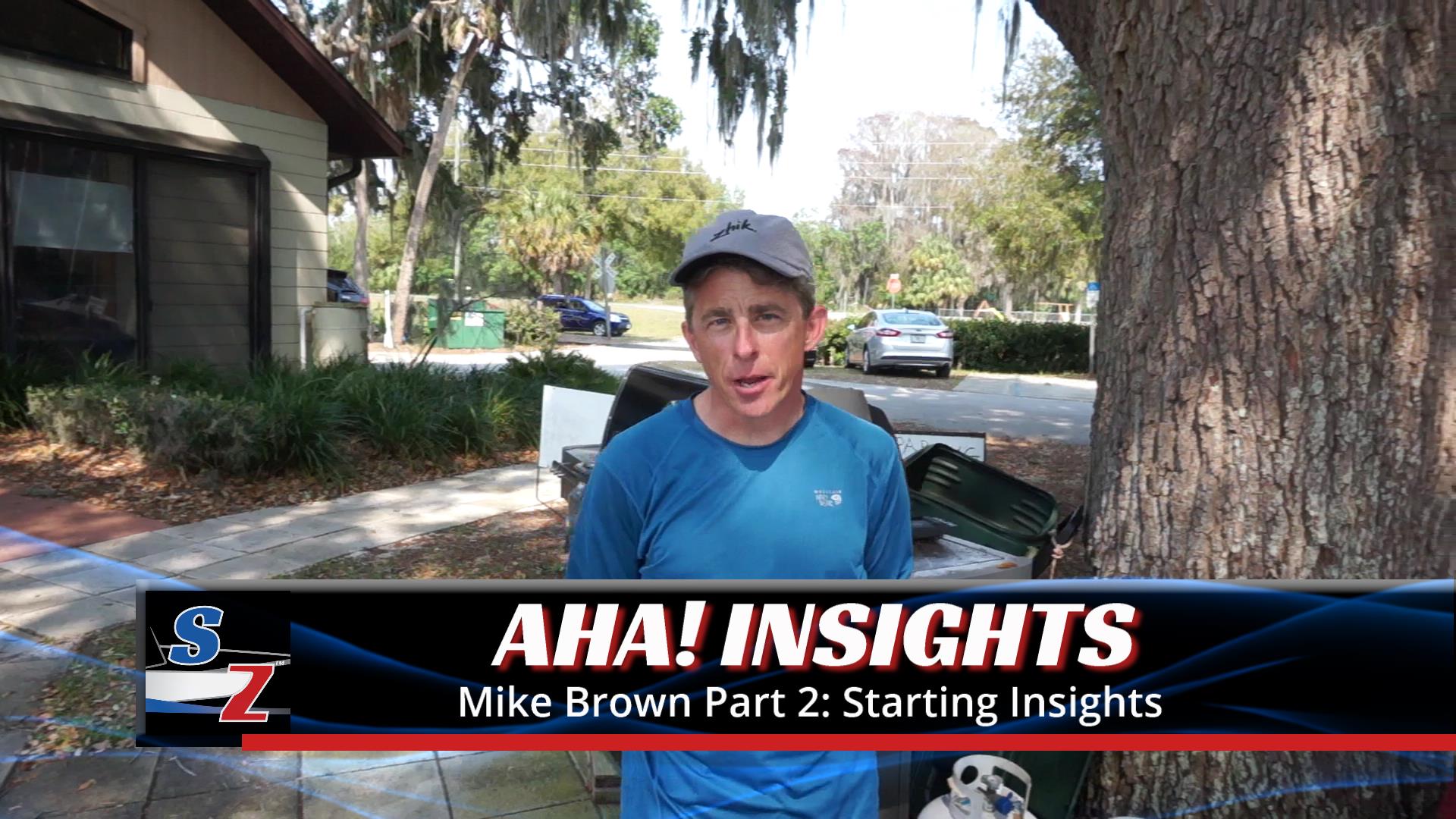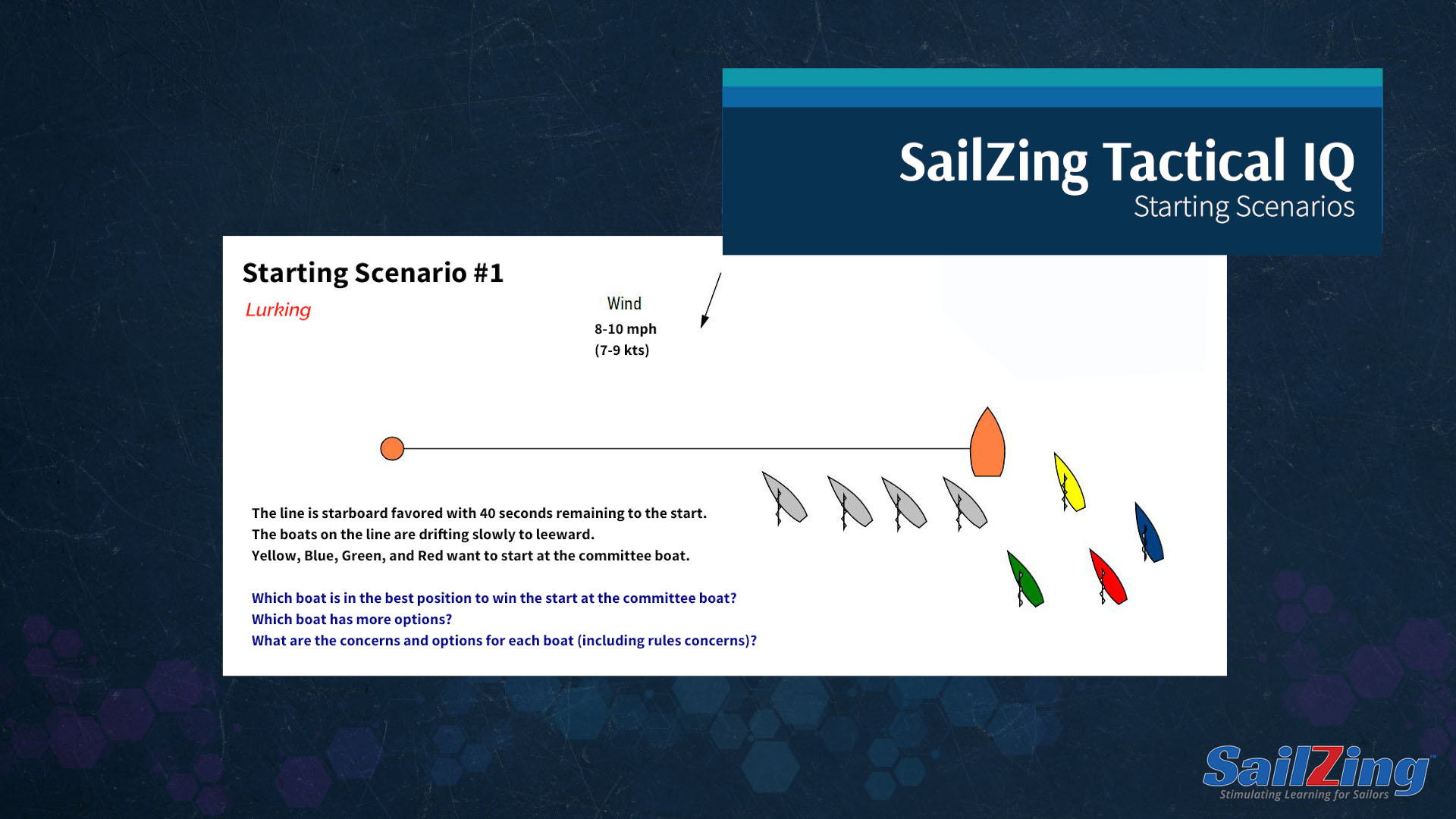The ILYA, Roble-Shea Sailing, and SailZing, LLC are partnering to bring you a series of videos with insights from ILYA’s Olympic qualifiers, Stephanie Roble and Maggie Shea. The videos are edited recordings of live webinars conducted in Spring 2020. This week’s topic is starting.
Steph and Maggie shared many insights that go beyond the advice most of us have learned. The interaction was rich, with pre-planned polls and lots of viewer questions.
Watch the full video, or use the timings in the video description to go directly to the topics that interest you. Or, read a summary of the key insights below, with links to resources for more information.
Outline and Video Timings
- Starting insights (00:01:49)
- Two goals
- When does the race really begin?
- The “favored end” is not always favored
- Where to start – four factors (00:07:55)
- Line bias (00:09:39)
- Two ways to check
- Pay-off chart
- The line in thirds – risk and reward (00:15:28)
- Line sag – illusions and tricks (00:18:45)
- Pre-start routine – 10 tasks (00:23:36)
- Making line sights work (00:29:07)
- Q&A 1 (00:35:35)
- In the sequence – minute-by-minute tasks (00:38:01)
- The final approach (00:45:09)
- Three areas for total focus
- Managing your hole
- Snatching and defending a gap
- 45 & 20 second assessment
- Accelerating (00:56:09)
- Know your boat
- Ways to accelerate
- Lane management after the start (00:58:50)
- Starting mentality – how to control fear and be aggressive (01:00:37)
- Scoring your own starts (01:04:48)
- Five starting drills (01:06:35)
- Q&A 2 (01:10:13)
Starting Essentials and Execution
Steph and Maggie use the same starting advice we all have been taught, but they’ve learned to execute the essentials to a high level. It’s the focus on essentials and execution that made this webinar valuable. Here are the highlights from this editor’s perspective.
Where to Start
This short section brought focus to the sometimes overly complex advice on starting. About 30% of the webinar viewers listed “where to start” as one of the most challenging aspects of starting. Steph and Maggie boil it down to four factors:
- Puffy/shifty day – start in phase and in pressure
- “Somewhere to race to” day – start where you can get the best lane toward the favored side
- Traffic – avoid traffic if you’re not confident of your boat handling skills
- All other factors even – take advantage of any line bias
Judging the line, exposure, and time/distance
About 25% of the webinar viewers listed “judging the line” as one of the most challenging aspects of starting. There are several parts to this, and Steph and Maggie work hard on execution. Here are the elements they mentioned:
- Get a line sight. Only about half the viewers reported using line sights frequently. Steph and Maggie use them routinely, and get line sights for on the line, 2 boat-lengths back, and 4 boat-lengths back.
- With no shore references, they use a partner in a coach boat to get the sight.
- If boats to leeward block the view they can sometimes sight back to the committee boat.
- If they are near the committee boat, they use it as a reference.
- Near the pin end, they focus on the eyes of the RC person watching for boats over.
- If they can’t see the ends of the line, they move up or put the boat head to wind.
- Are you exposed? Although they didn’t use these words, they reminded us that boats hang back because they think they are ahead of the boats around them. This causes line sag.
- If you are to leeward of a boat and heading 45 degrees to the wind, you are not exposed if your bow is slightly in front. You may not be exposed until your mast is even with the windward boat’s bow.
- Similarly, you are not exposed compared to a boat to leeward unless your bow is in front of the leeward boat’s mast.
- Time and distance. They stressed how important it is to know how much time and distance it takes to accelerate your boat to full speed in various wind and wave conditions. They practice this using a fixed buoy, and confirm it on the course during the pre-race routine.
Starting routines – pre-start and during sequence
In keeping with their process-oriented approach, they stick to a routine both before and during the sequence. We printed these routines here to show what it takes to be on top of things.
Before the sequence:
- Upwind tuning, based on the day type (see more about this in the Racing Strategy video/article)
- Get compass numbers
- Boat handling tune-up
- Check the gate for bias
- Practice accelerations (at least 5)
- Go head to wind and check direction frequently
- Check line bias
- Get a line sight
- Check kite
- Check for weeds
During the sequence:
- 5:00 – at the RC boat, sync watch, get course and bearing, check line sight, determine final rig tune
- 4:00 – check timing of prep signal, check wind direction and line bias
- 3:00 – look upwind, discuss game plan, reminders about priorities for the conditions
- 2:00 – final game plan call and head to the chosen side
- 1:00 – dial into boats around us, distance to line and set up on other boats; bail out call
- 0:30 – where is our bow? How is our gap to leeward?
- 0:20 – what is pressure for start? Controls on, manage flow based on time and distance and bow even with other boats. This is also the last safe time to do a double tack for space in the 49er FX.
- 0:15 – acceleration call and execute
Managing your hole
During the final minute, you need to become hyper-focused on three goals: 1) space to leeward, 2) controlling boat to windward, 3) managing flow over the boards and rudder to give you control.
Here are some tips:
- Keep your head on a swivel looking for attackers
- Take up space to discourage attackers
- Attack others when they aren’t looking
- Sail past a hole on port before tacking into it
After the start
Top speed after the start is so important that you must give it your full focus. One sailor told me he wants to be so tuned in with boat speed, heading, and controls at 1-3 seconds before the start that he doesn’t have to adjust anything at the gun.
Steph and Maggie recommend marking controls so that you can set them quickly. They also frequently practice starting with a partner and sailing hard for two minutes on one tack, then tacking and sailing for two more minutes. This drives home the point that the start isn’t won until the fleet is sorted out.
More Information
Want more information about these topics? Here are some links to SailZing.com articles:
Execute the Start – Time to Get Aggressive
Starting Line Approach: What Kind of Creature Should You Be?
Starting Strategy and Tactics: Where to Start
Using a Line Sight to Give you Confidence on the Starting Line
Lane Management After the Start – Tips and Drills
Roble/Shea Sailing
Keep up with Steph and Maggie’s campaign and consider donating.
ILYA foundation – donate here or directly at Roble/Shea website





